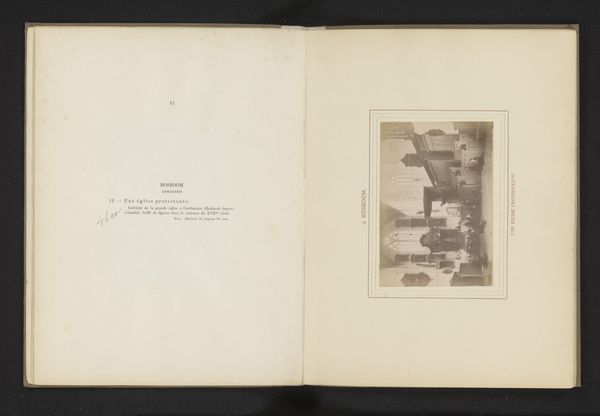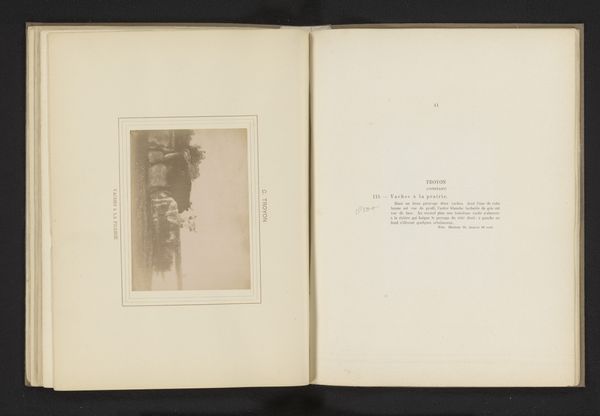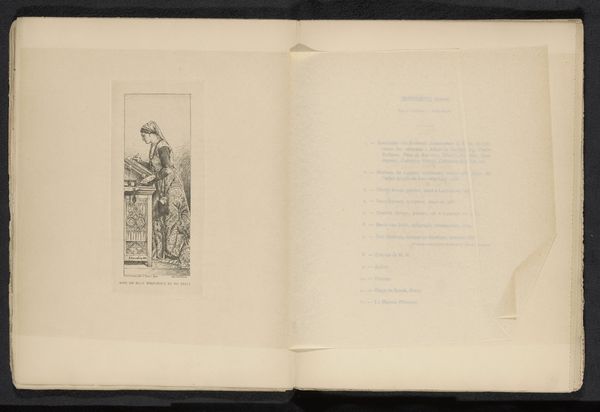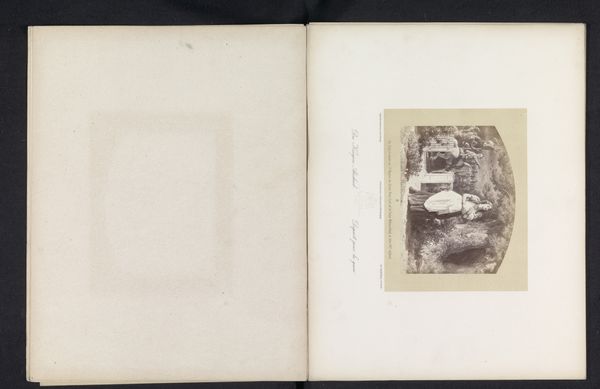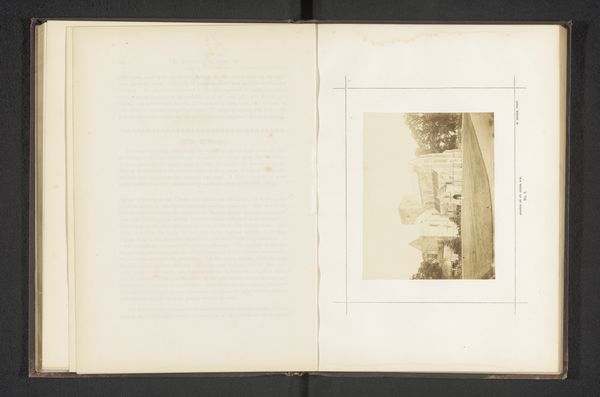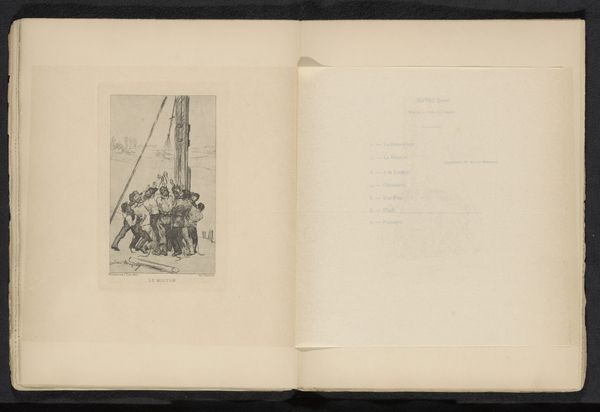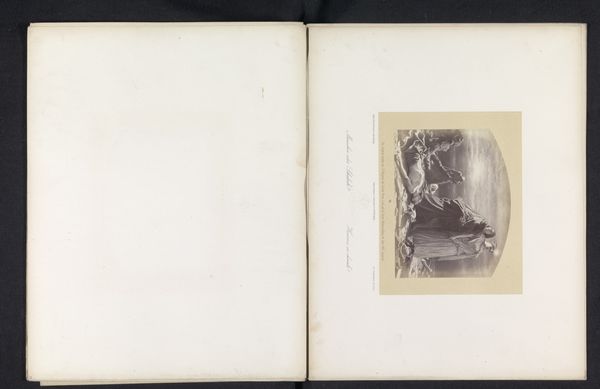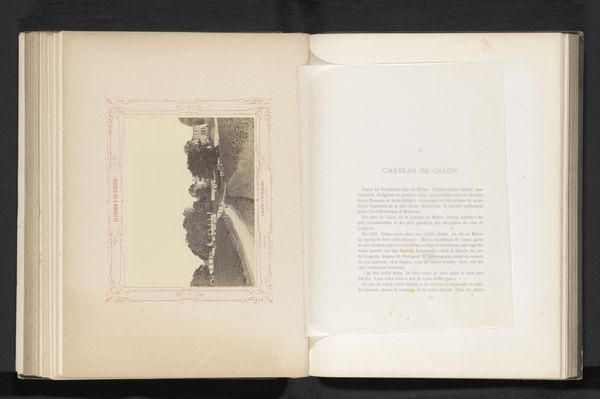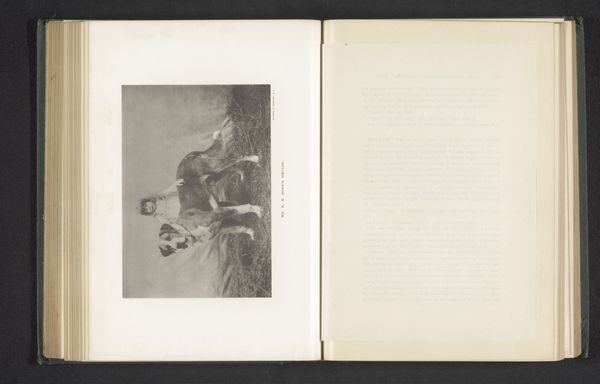
Reproductie van een schilderij van François van Campenhout die de Brabançonne zingt, door Antoine van Hammée before 1883
0:00
0:00
print, paper, photography, engraving
#
aged paper
#
homemade paper
#
ink paper printed
#
paperlike
# print
#
sketch book
#
hand drawn type
#
paper
#
photography
#
personal sketchbook
#
hand-drawn typeface
#
sketchbook drawing
#
history-painting
#
academic-art
#
sketchbook art
#
engraving
Dimensions: height 114 mm, width 159 mm
Copyright: Rijks Museum: Open Domain
Editor: This is an engraving, a reproduction actually, of a painting of François van Campenhout singing "La Brabançonne" by Antoine van Hammée, made sometime before 1883. It’s displayed within the pages of what looks like a sketchbook. I’m immediately struck by how the print feels like a document of a document. How do you interpret this layering? Curator: That's a very astute observation. Let’s think about the process: a painting, likely commissioned or created for a specific purpose, then reproduced through engraving – a technique inherently tied to mass dissemination. Finally, it finds a home within a sketchbook, suggesting a personal, perhaps even amateur, engagement with this imagery. It invites us to consider not just the *what* of the image – a patriotic scene – but the *how* of its transmission and consumption. What does the act of reproduction and personal documentation tell us about the painting's intended audience versus its actual reach? Editor: So, it's less about the historical event depicted and more about how that event was circulated and received through these different forms of media? Curator: Precisely! Consider the material itself. Paper, ink, printing – these were all commodities, produced through specific labor practices. How does that impact our understanding of its message? Was this print intended for the elite or a broader public? This is not simply art imitating life but art embedded in a complex web of production, distribution, and reception. Editor: That’s fascinating. I never considered how the materials themselves tell such a critical story. Thanks for pointing that out! Curator: And thank you for highlighting the intriguing framing within the sketchbook. It reveals so much about how we approach the meaning-making of the piece.
Comments
No comments
Be the first to comment and join the conversation on the ultimate creative platform.
